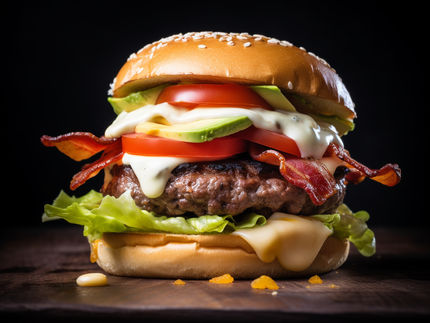Asian soups with ramen and udon noodles: what diabetics need to know
If you have type 1 or type 2 diabetes, watch out for carbohydrates and enjoy with vegetables
Advertisement
Quick to make, delicious and modern: Asian soups with noodles such as ramen and udon are all the rage. Depending on the ingredients, production method, ingredients and portion size, they can be light and nutritious or very high in calories and increase blood sugar. People with type 1 and type 2 diabetes need to pay attention to their glucose metabolism on a daily basis and adapt their therapy accordingly. The non-profit organization diabetesDE - German Diabetes Aid provides information and tips on what to look out for when choosing and preparing ramen.
Ramen are thin, slightly yellowish, wavy wheat noodles that cook particularly quickly until soft. This is why they are often sold in instant products - typically, for example, as a noodle snack with a little oil and spices in plastic bags or directly in plastic cups to be poured with boiling water. Their main source of energy is carbohydrates, as they are made from wheat flour, salt and water.
Pay attention to ingredients and production method
Ready-made ramen in particular is deep-fried in advance and refined with flavor enhancers for a consistent culinary taste. "This is why such instant noodles are not only rich in fast-acting carbohydrates, but also in low-quality fried fat. Such fats usually contain trans fatty acids and are generally not recommended for health and blood lipid levels," explains Kirsten Metternich von Wolff, a state-certified dietician and nutritionist: "If you want ramen noodles, it is advisable to choose classic products without additives. Information about the composition can be found on the back of the packaging. The list of ingredients will also tell you whether the noodles have been deep-fried beforehand." Traditionally, 100 grams of ramen noodles contain 76 grams of carbohydrates with an effect on blood sugar, hardly any fat, small amounts of protein and around 355 calories (kcal). Wholemeal ramen noodles are particularly useful for diabetes. These are usually available in organic supermarkets.
Udon - thick, soft noodles
They look like thick macaroni without a hole in the middle. The white, very soft, rubbery udon noodles are sold ready-cooked or as a dry product in supermarkets, sometimes also in discount stores and Asian food stores. diabetesDE expert Kirsten Metternich von Wolff explains their advantages: "Unlike ramen noodles, ready-cooked and shrink-wrapped udon noodles are not deep-fried. They only consist of wheat flour, water and salt." They are particularly popular in Asian dishes such as soups or stir-fries. 100 grams of pre-cooked udon noodles contain just under 30 grams of carbohydrates with an effect on blood sugar, hardly any fat, small amounts of protein and around 135 calories (kcal). In the dry version, 100 grams contain around 335 kcal, which is made up of 73 grams of carbohydrates with an effect on blood sugar, a small amount of protein and hardly any fat.
Best enjoyed with vegetables
Whether udon or ramen: Like all conventional types of pasta, both have a direct impact on blood sugar. Their amount of energy should not be underestimated either. "Overall, they are suitable for people with type 1 and type 2 diabetes if they are taken into account and calculated with the required amount of insulin and calories," advises Kirsten Metternich von Wolff. "We also recommend choosing pasta that is not pre-fried and combining it with fresh or roasted vegetables, salad and a few chopped nuts." In this way, their rapid rise in blood sugar can be positively influenced thanks to fiber from the crunchy fresh pasta and nuts.
Note: This article has been translated using a computer system without human intervention. LUMITOS offers these automatic translations to present a wider range of current news. Since this article has been translated with automatic translation, it is possible that it contains errors in vocabulary, syntax or grammar. The original article in German can be found here.




























































